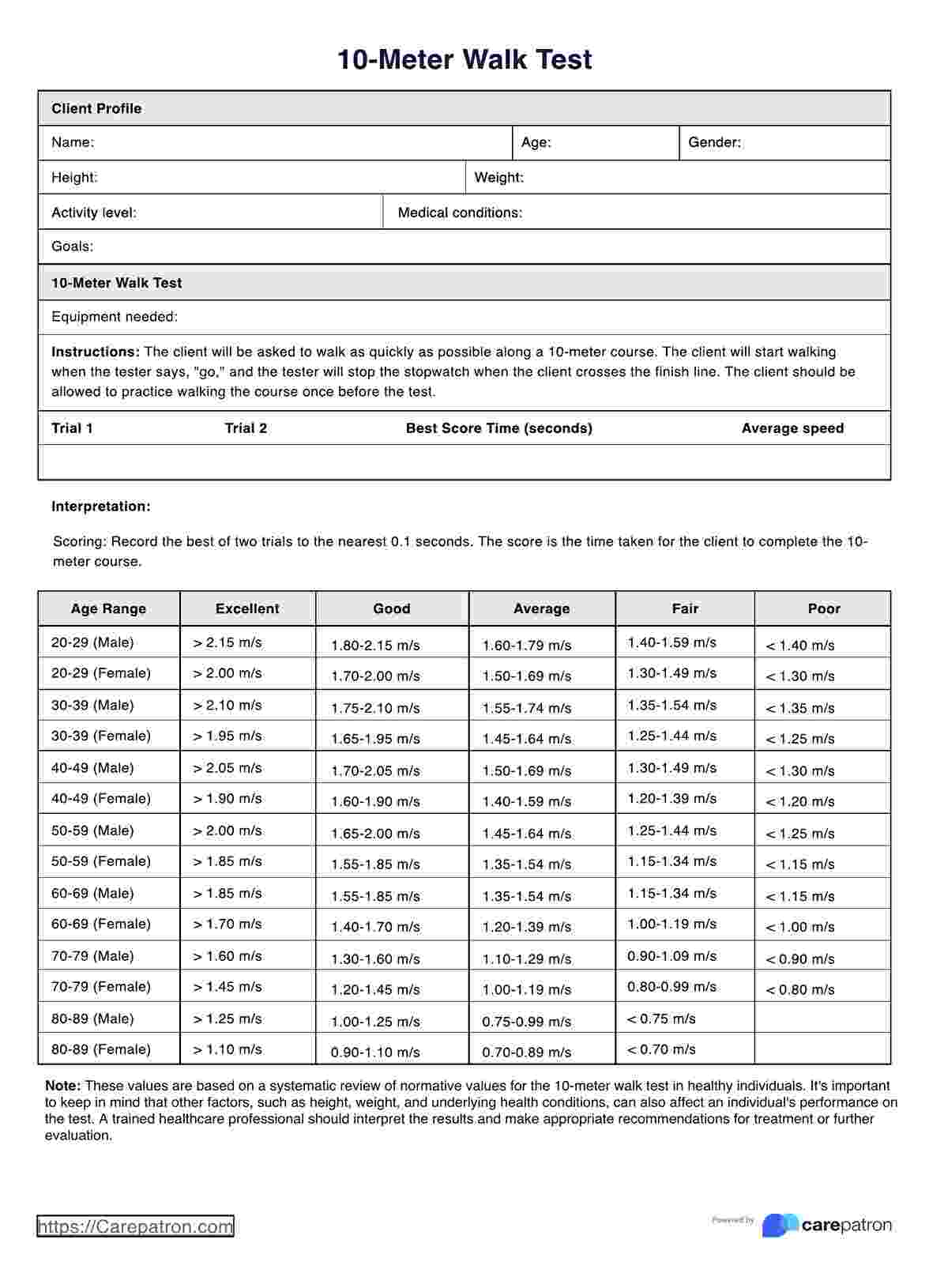Yes, this template is customizable. You can edit it according to your preferences and requirements using Microsoft Word or Google Docs.

10 Meter Walk Test
Discover the 10 meter walk test — a quick and easy assessment tool to measure walking speed and endurance. Learn how it is used for fitness and rehabilitation.
10 Meter Walk Test Template
Commonly asked questions
No, you don't need a physical therapy background to use this template. It is designed to be user-friendly and can be used by anyone who needs to assess walking speed and endurance.
Yes, the tool includes instructions for administering the 10-meter walk test. It also provides a chart for interpreting the results and making recommendations for improvement. However, it's important to note that this tool is not a substitute for professional advice from a qualified physical therapist.
EHR and practice management software
Get started for free
*No credit card required
Free
$0/usd
Unlimited clients
Telehealth
1GB of storage
Client portal text
Automated billing and online payments











